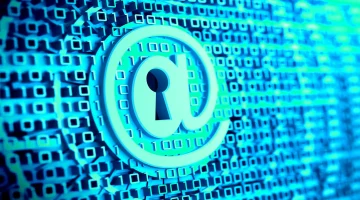
Asset Tokenization and the Future of Ownership
Ownership is an ideal that serves to motivate individuals’ desire to care for what they own responsibly, yet recent trends suggest our attitude toward ownership may soon shift.
Asset tokenization uses secure techniques to make illiquid assets more accessible, reduce minimum investment thresholds and increase liquidity while increasing transparency and security.
Accessibility
Asset tokenization offers investors a great way to diversify their investment portfolios and access markets they had been shut out from previously, yet has yet to reach the wider market due to several obstacles, including limited institutional-grade digital asset wallets and custody solutions, and difficulty aligning digital tokenization with existing back office systems.
Asset Tokenization involves turning physical assets into digitally tradeable digital assets by using secure techniques to divide ownership into fractions represented by tokens, providing new investment opportunities while also lowering barriers of entry for markets such as real estate, venture capital funds and commodities.
Investors with limited resources can enter the market and participate in exciting, innovative projects by investing a much lower sum than they would need for full ownership of an asset. Furthermore, this reduces transaction costs and makes payments and trades simpler and quicker.
Liquidity
Asset tokenization may help reduce operational costs due to automation through smart contracts. This could prove particularly advantageous in asset classes such as corporate bonds where servicing and issuing operations often require manual processes involving interest calculation and coupon payment disbursement – processes which are both tedious and error prone.
As with traditional real-world assets, asset tokenization offers real advantages to traditional real-world assets by enabling their sale in smaller chunks to a broader investor base without incurring discounts due to illiquidity – this allows investors to diversify their portfolio more easily.
Asset tokenization opens investment opportunities in multiple sectors, including luxury items (art or a vintage watch) regulated financial instruments (stocks and bonds), intellectual property rights (music and other works of authorship), or non-financial tokens (NFTs) that serve as loyalty rewards to access exclusive memberships for products or experiences; this increases consumer spending as loyalty grows with brand ownership and consumer spending increases; NFTs may also serve as an excellent solution to expand access for retail investors to asset classes otherwise unavailable to them.
Transparency
Asset tokenization offers many advantages for improving transparency. When an asset is tokenized, its details are recorded onto the blockchain as a public-private key pair that authenticates buyers as the true owners of that particular asset. This digital signature makes it impossible for someone else to claim ownership over it later.
Blockchain’s immutability protects against fraud. Through token programming, transactions can be automated via smart contracts to reduce costs and speed up processing times – thus saving both time and money in transaction fees.
Additionally, tokenization enables investors to gain access to previously inaccessible markets, opening up investment opportunities that were once only accessible to wealthy collectors. Real estate purchases once required significant financial commitment; now tokenization makes fractional ownership available so anyone can buy and sell fractional ownership at will; art collectors can own pieces previously only accessible through wealthy collectors; this could revolutionize asset management while creating new market opportunities for everyone involved.
Security
Imagine owning a piece of the moon or rare historical document, or investing in an up-and-coming technology company or renewable energy project with just a small investment amount – these were once unattainable dreams, but thanks to asset tokenization they’re now accessible – providing people with even smaller funds with diversification opportunities in their portfolios.
Tokenized assets are recorded on a blockchain – a shared and immutable ledger – providing transparency, authenticity, and provenance. When physical assets are sold, their tokenized version can be stored securely on the blockchain for verification at any time.
Tokenization also delivers operational cost savings through 24/7 data availability and automated programmability, making tokenization particularly helpful for assets that have traditionally been highly manual or error-prone such as corporate bonds. Furthermore, tokenization could facilitate faster transaction settlements that generate substantial cost savings for financial firms operating in high interest rate environments.





